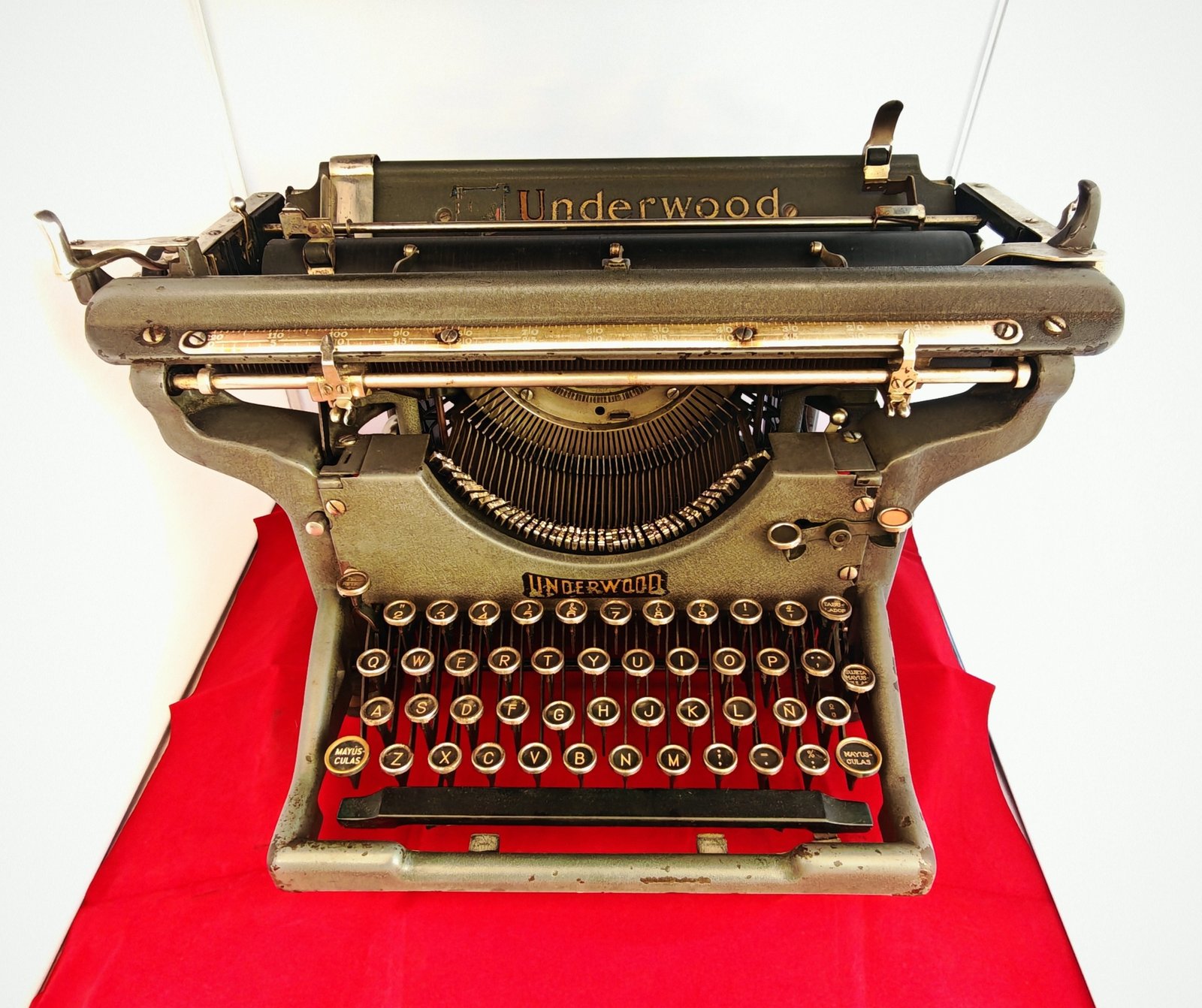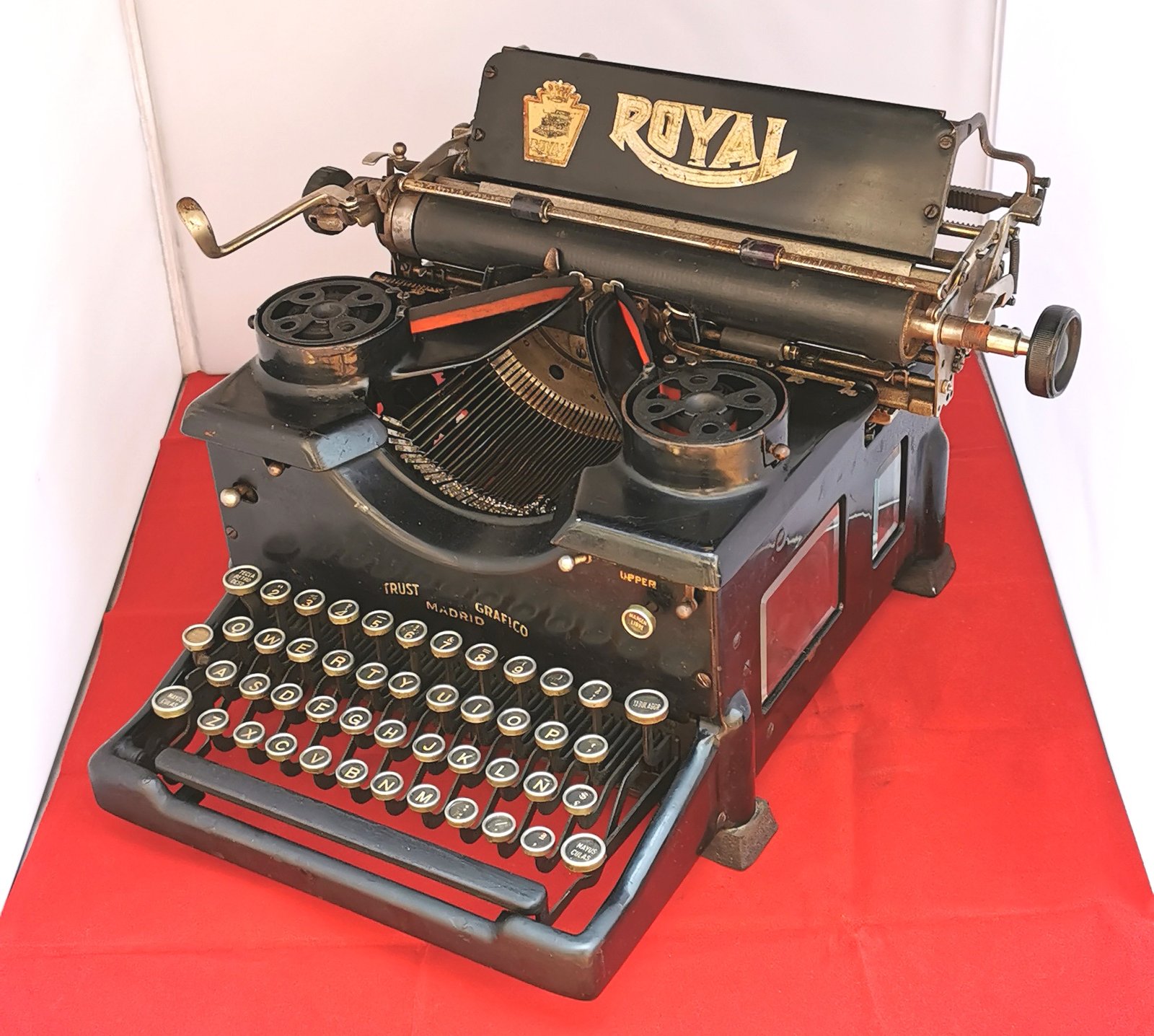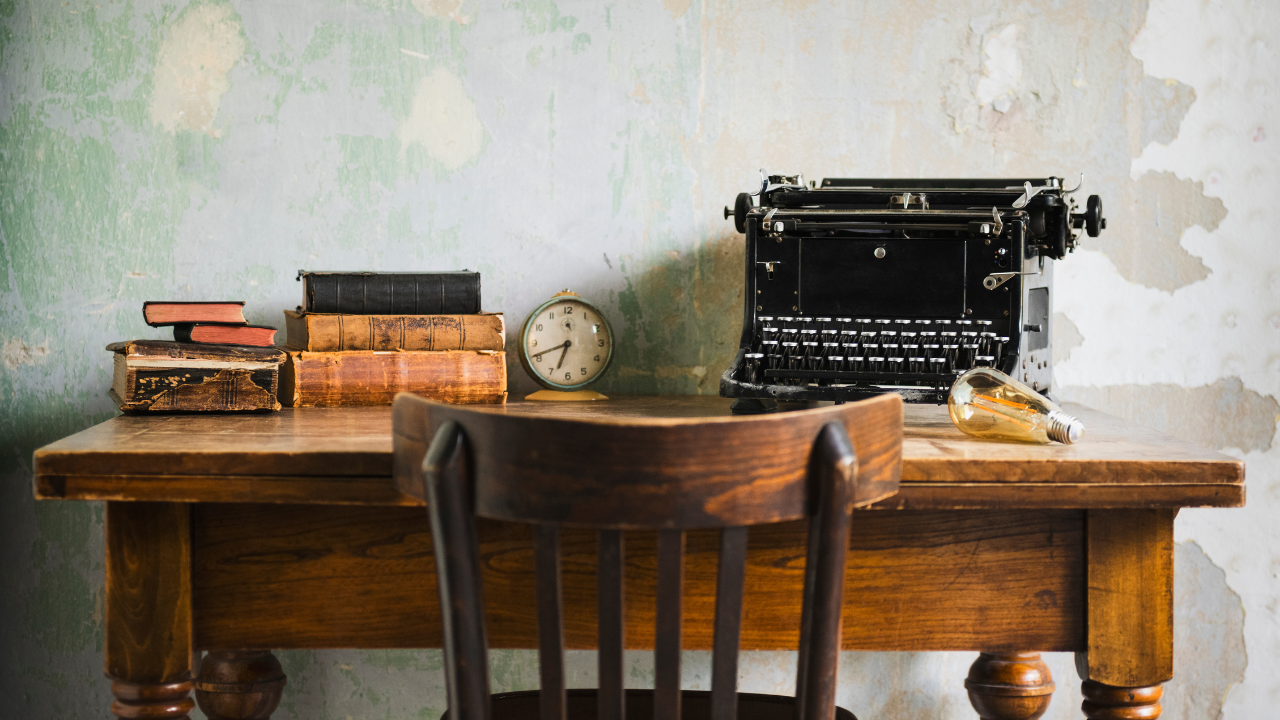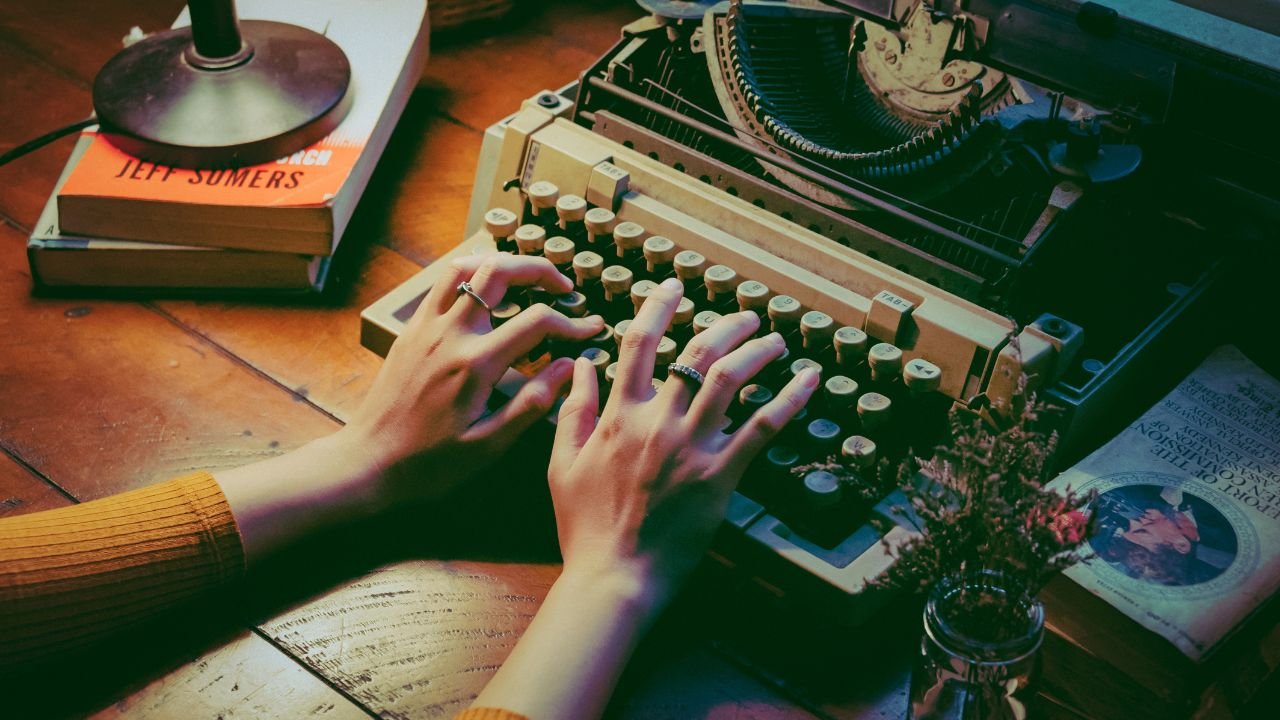Typewriters are not just tools from the past: they are...Leer más
Types of Typewriters: Complete Guide
Typewriters are not just tools from the past: they are pieces that set the rhythm of modern communication. Each model reflects a historical moment, a technical advance, and a different way of understanding writing.
In this guide, we show you the main types of typewriters, their characteristics, advantages, origins, and how to recognize them.
A journey through more than a century of mechanical art and human precision.
Types of Typewriters by Technology
Mechanical (Manual) Typewriters
The first mechanical typewriters began to be manufactured in the mid-19th century.
The key invention is attributed to Christopher Latham Sholes, who patented his design in 1868 together with Carlos Glidden and Samuel Soulé.
His machine, manufactured by Remington & Sons in 1873, was the first to be mass-produced and laid the foundations for the QWERTY keyboard we use today.
These machines worked completely manually: each key activated a metal arm that struck the ink ribbon against the paper.
Main Features:
- Solid metal structure.
- 100% mechanical operation.
- Carriage return via side lever.
Advantages:
- Total electrical independence.
- Extremely durable.
- Iconic aesthetics and characteristic sound.
Disadvantages:
- Require more force when typing.
- No automatic or correction functions.
Classic Examples:
- Remington Standard
- Underwood No. 5
- Olivetti Studio 44
- Hermes 2000
They were the writing standard for nearly a century. Their precision and reliability still amaze today.
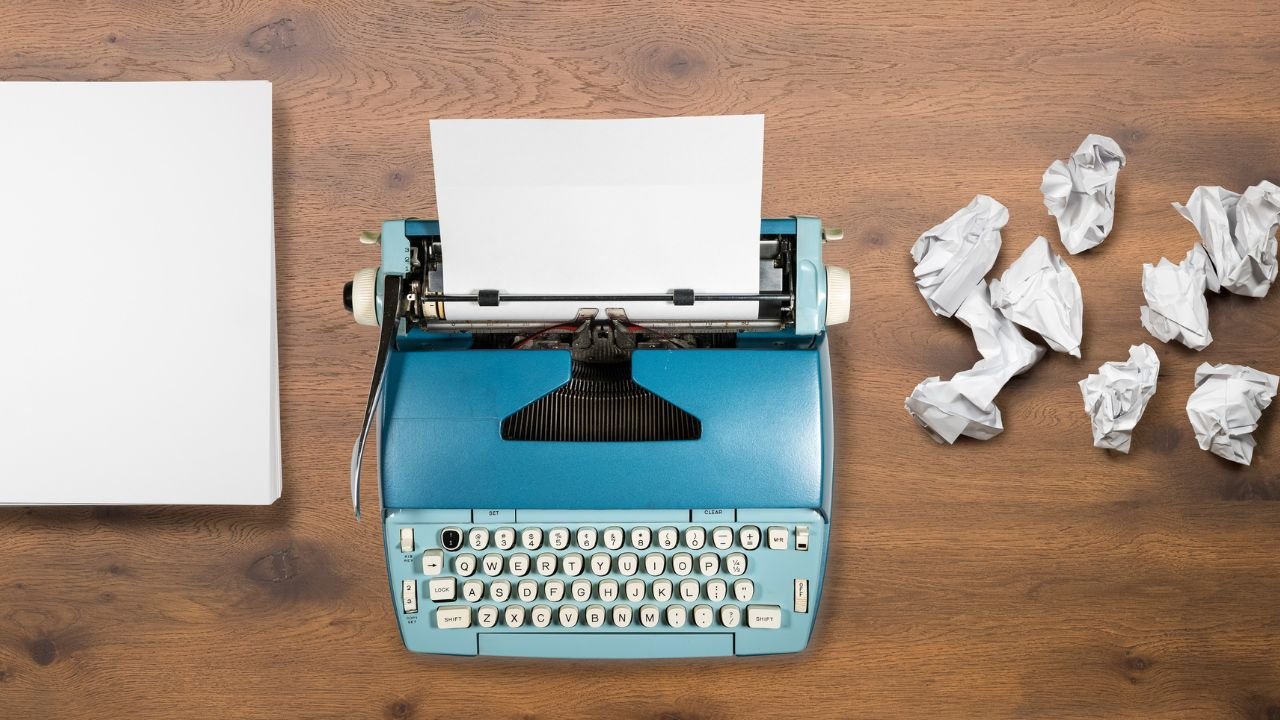
Electric Typewriters
The first electric typewriters appeared in the 1920s, although they did not become popular until after the 1940s.
The pioneer was The Electromatic Typewriter Company, acquired by IBM in 1933. From there, IBM led the electric era with models that revolutionized office work.
The operation was still mechanical but with electrical assistance: a motor drove the typebars and the carriage, making writing faster and lighter.
Features:
- Internal electric drive motor.
- Smooth, even keystrokes.
- Automatic or assisted carriage return.
Advantages:
- Faster, effortless typing.
- Ideal for intensive work.
- Reliable and consistent mechanism.
Disadvantages:
- Depend on a power outlet.
- Heavier and more complex to repair.
Examples:
- IBM Model A Electric
- Olympia SG3 Electric
- Silver Reed EX 35
These machines represented modernity in offices and businesses during the second half of the 20th century.
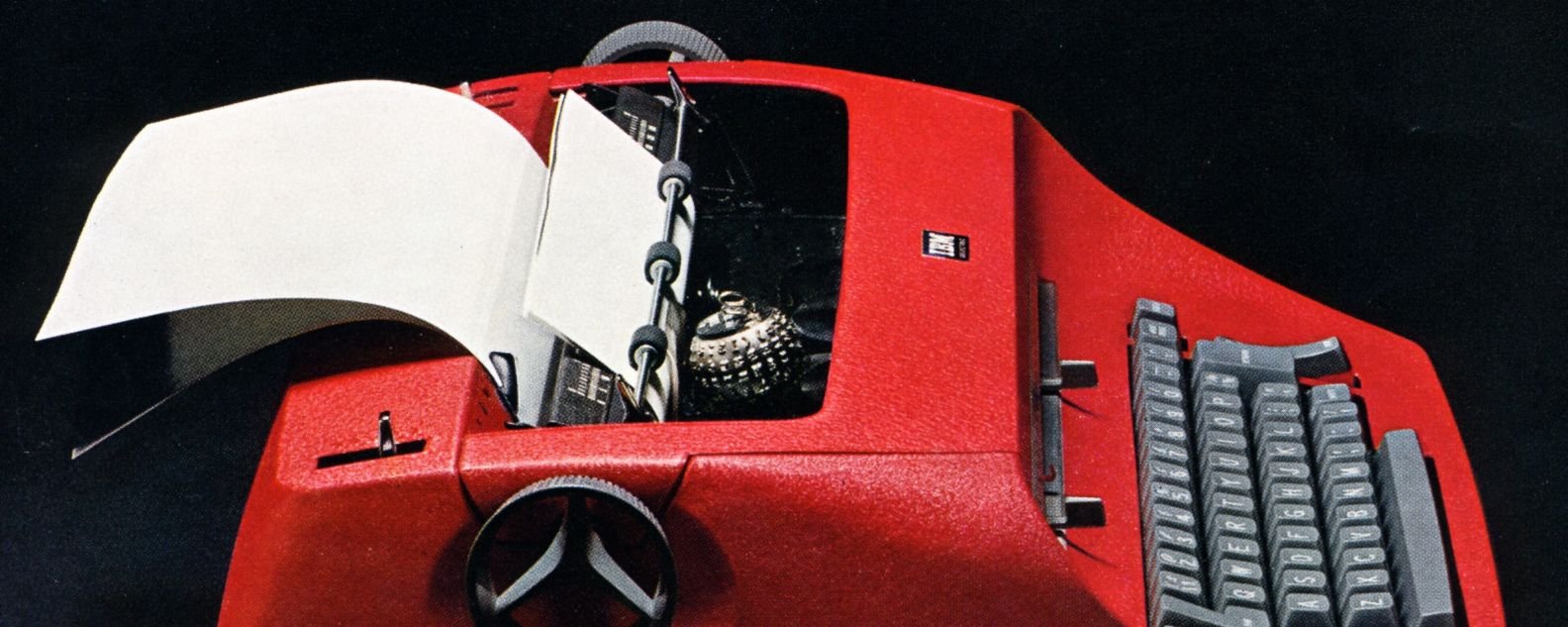
Electronic Typewriters
The electronic era began between the 1970s and 1980s with the advent of integrated circuits and interchangeable typing heads.
The first major revolution was the IBM Selectric, launched in 1961, which replaced the metal arms with a rotating “golf ball.”
Years later, Olivetti and Silver Reed introduced electronic models with memory and automatic functions.
Features:
- Rotating head (“daisy wheel” or “golf ball”).
- Automatic correction and partial memory.
- Motor and digital control.
Advantages:
- Precise and quiet typing.
- Ability to correct errors.
- Ideal for professional typing.
Disadvantages:
- Greater technological dependence.
- Complex and costly repairs.
Examples:
- IBM Selectric II
- Olivetti ET 121
- Silver Reed EX Series
They represented the transition toward the modern computer, where mechanical precision gave way to electronic intelligence.
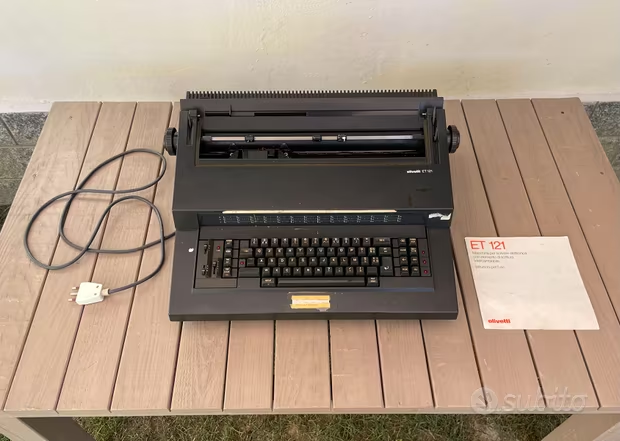
Types of Typewriters by Format and Use
Portable Typewriters
Designed to accompany their user, portable machines became a symbol of creative freedom.
From the 1930s onward, journalists and writers carried them on trains, cafés, or improvised newsrooms.
Features:
- Weight between 3 and 6 kg.
- Short carriage, ideal for letters or sheets.
- Hard case or protective cover.
Advantages:
- Easy to transport.
- Ideal for small spaces.
- Elegant and functional design.
Disadvantages:
- Limited carriage.
- Simpler mechanism with fewer extras.
Examples:
- Olivetti Lettera 22
- Hermes Baby
- Silver Reed Silverette
Small but powerful: perfect for those who want to write with soul without taking up too much space.
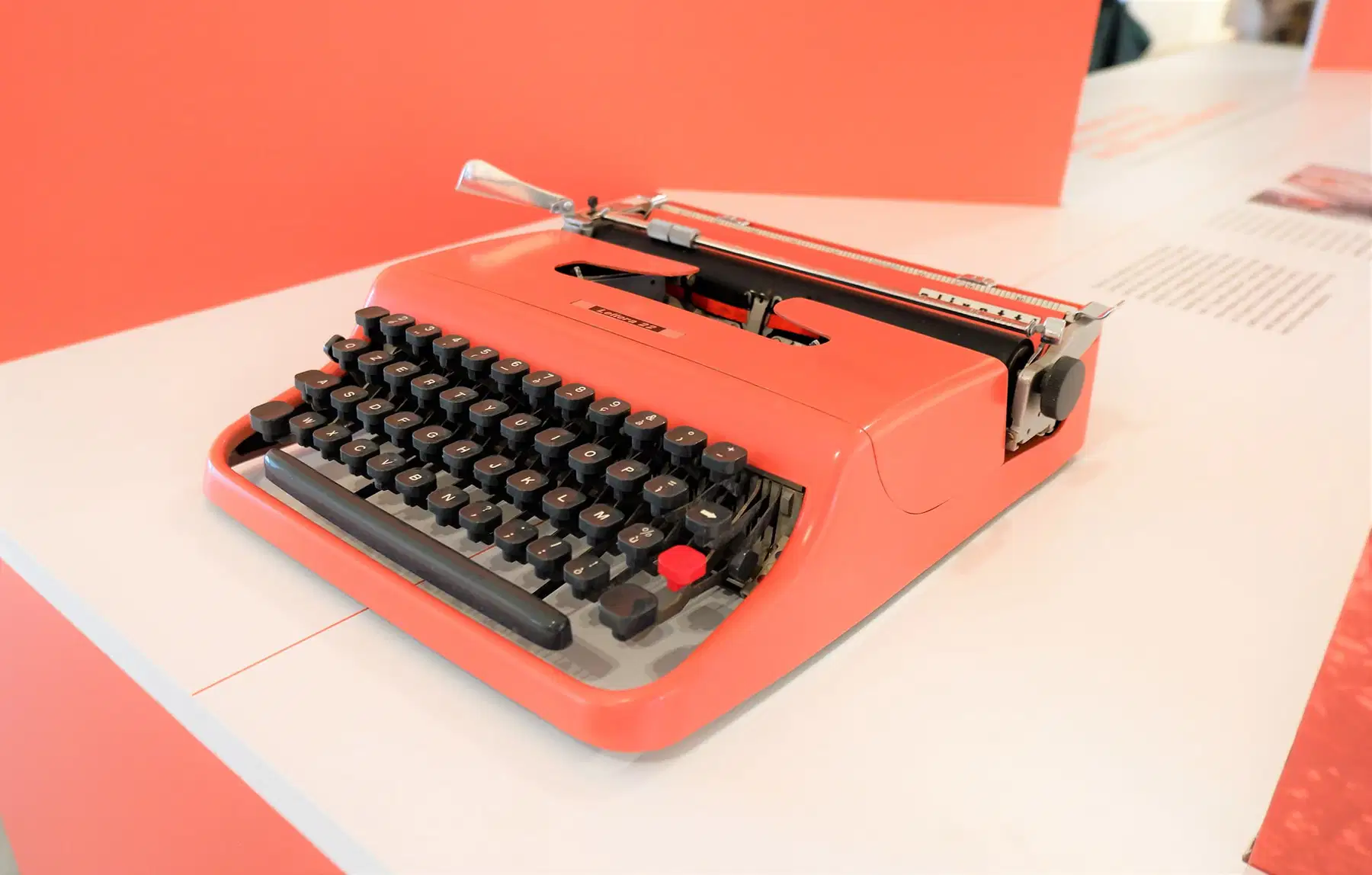
Semi-Portable or Desktop Typewriters
They appeared to balance comfort and stability.
Larger than portables but still manageable, they were common in personal offices or writers’ studios.
Features:
- Stronger metal body.
- Intermediate carriage (up to 40 cm).
- More robust mechanism.
Advantages:
- Greater precision when typing.
- More durable and stable.
- More comfortable typing than lightweight portables.
Disadvantages:
Not ideal for frequent transport.
Examples:
- Hermes 3000
- Olivetti Studio 46
- Olympia SM 3
If you seek balance between lightness and performance, this type is ideal.
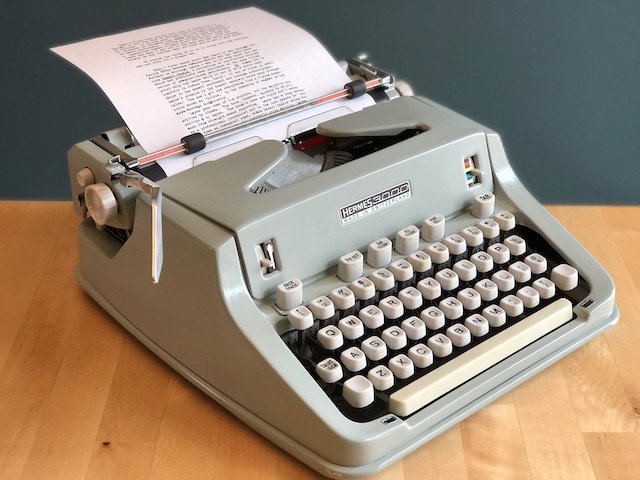
Office or Desktop Typewriters
The emblem of professional work during the first half of the 20th century.
Made of cast iron, weighing over 15 kg, and built to withstand thousands of hours of use.
Features:
- Large size and wide carriage.
- Firm keyboard response.
- Solid metal frame.
Advantages:
- Extremely durable.
- Absolute precision and stability.
- Perfect for prolonged writing.
Disadvantages:
- Very heavy.
- Require space and a stable surface.
Examples:
These machines defined the sound and aesthetics of 20th-century typing.
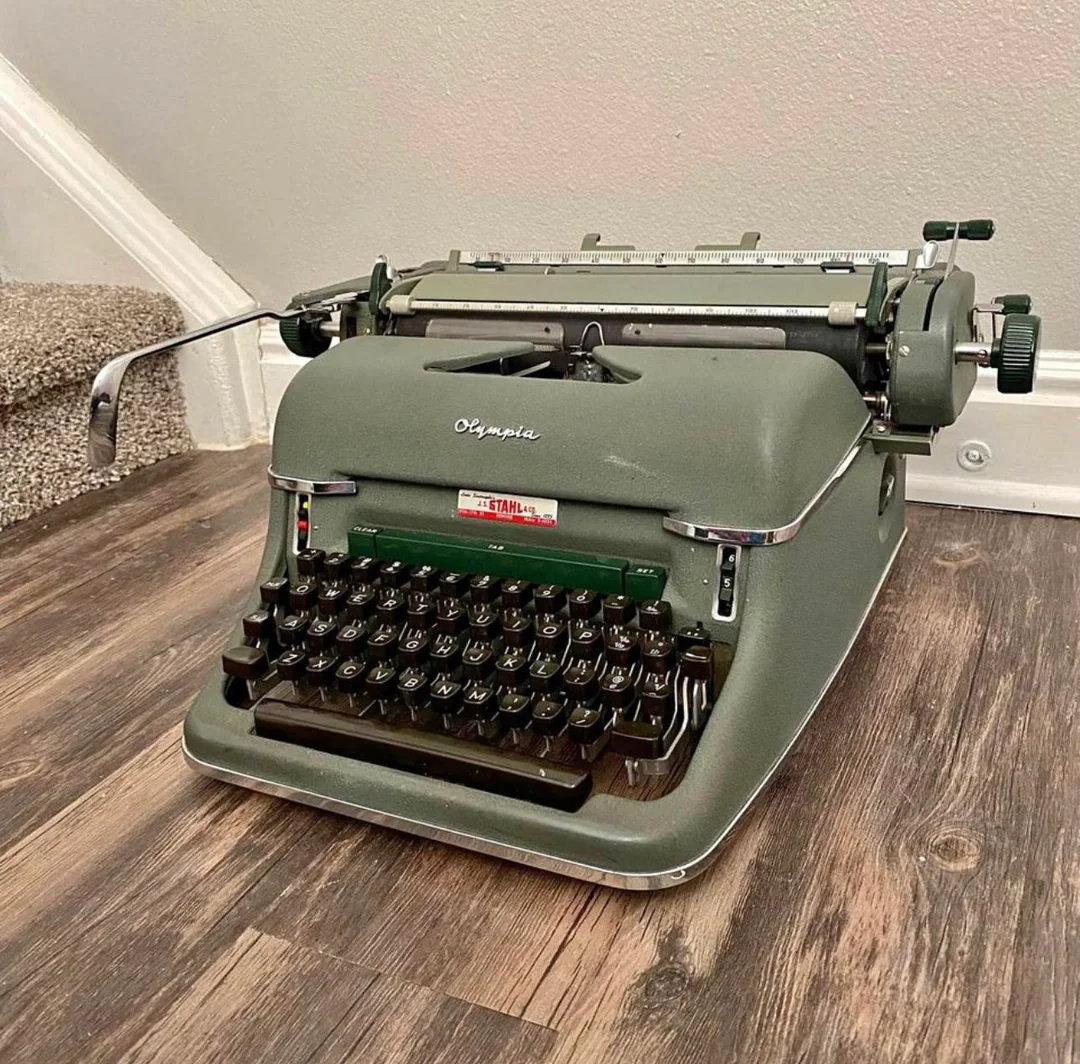
Electric Office Typewriters
Their boom came in the 1960s and 1970s, when offices modernized their equipment.
Faster, cleaner, and more ergonomic, they combined the strength of desktop models with the smoothness of electric ones.
Advantages:
- Fast, consistent writing.
- Minimal physical effort.
- Modern, professional appearance.
Disadvantages:
- Depend on electricity.
- More delicate parts.
Examples:
- IBM Selectric II
- Adler Gabriele 35 Electric
- Silver Reed EX 35
They marked the end of the mechanical era and the beginning of automation.
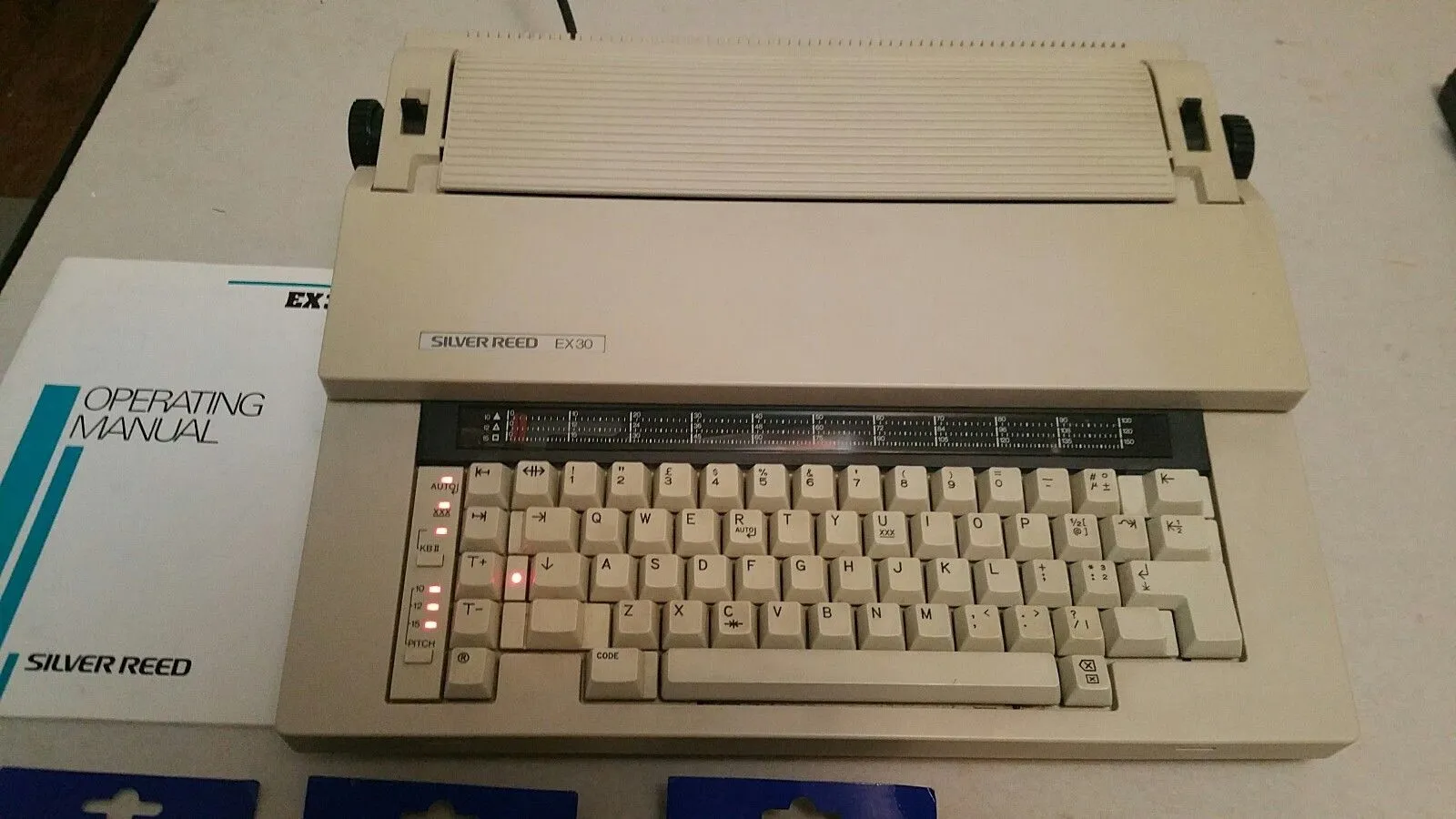
How to Recognize Each Type at a Glance
Identifying a typewriter can be as fascinating as reading its story. Each model has unique traits revealing its era, technology, and purpose.
Mechanical Typewriters
The most honest and loud: pure metal, gears, and human strength.
When typing, each key strikes with a dry hit you feel in your fingers.
- No plug or electrical parts.
- Include a side lever for line changes.
- Their metallic sound and oil scent give them away.
Electric Typewriters
Quieter and smoother. When turned on, they emit a constant hum from the internal motor.
- Have a cable and plug.
- Carriage return may be automatic.
- Keys feel light, almost floating.
Electronic Typewriters
The bridge between analog and digital.
They often have screens, LED indicators, or rotating heads.
- Plug in like a computer.
- Usually include a delete or correction button.
- Typography is sharper and more uniform.
Portable Typewriters
Small, charming, and often stored in their original case.
- Lightweight and compact design.
- Short carriage and enclosed housing.
- Some come in bright or pastel colors.
Office Typewriters
Imposing, heavy, and loud. They are the essence of classic typing.
- Wide base, solid metal.
- Large carriage with visible lever.
- Easy to recognize by their presence: impossible to ignore.
Which Typewriter to Choose According to Your Goal
If you write often:
Choose a Hermes 3000 or Olympia SM 4: precise, smooth, and electricity-free.
If you prefer modern comfort, the IBM Selectric II is ideal.
If you want decoration or a gift:
Opt for an Olivetti Lettera, Hermes Baby, or Silver Reed Silverette: light, functional, and visually charming.
If you collect:
Underwood, Royal, LC Smith, and Olympia are must-haves for any serious collection.
If you restore:
Olivetti, Hermes, and Olympia offer accessible mechanics, available parts, and spectacular results after proper restoration.
Ejemplos de Máquinas de escribir que definieron cada era
Underwood No. 5 (1900s)
The first truly modern typewriter. Introduced the visible keyboard and standardized QWERTY layout.
A symbol of professional typing.
Royal 10 (1914)
Iconic and majestic.
Its cast iron body and glass side panels made it both functional and decorative.
Olivetti Studio 44 (1952)
Designed by Marcello Nizzoli, it embodies Italian elegance. Smooth writing, ergonomic design, and timeless beauty.
Olympia Traveller de Luxe (1969)
Compact, modern, and youthful. Its clean-lined design marked the aesthetic shift of the 1970s.
- Select options This product has multiple variants. The options may be chosen on the product page
Our Professional Opinion: An Evolution with Soul
Understanding the different types of typewriters means delving into a story of ingenuity and beauty.
From the first metallic strike of the Underwood to the gentle rotation of an IBM Selectric, each machine represents a stage in human progress.
If you want to write slowly, feel every word, or simply decorate with history, there is a perfect machine for you.
Because in every key, there is a story.
And in every story, a machine waiting to sound again.

